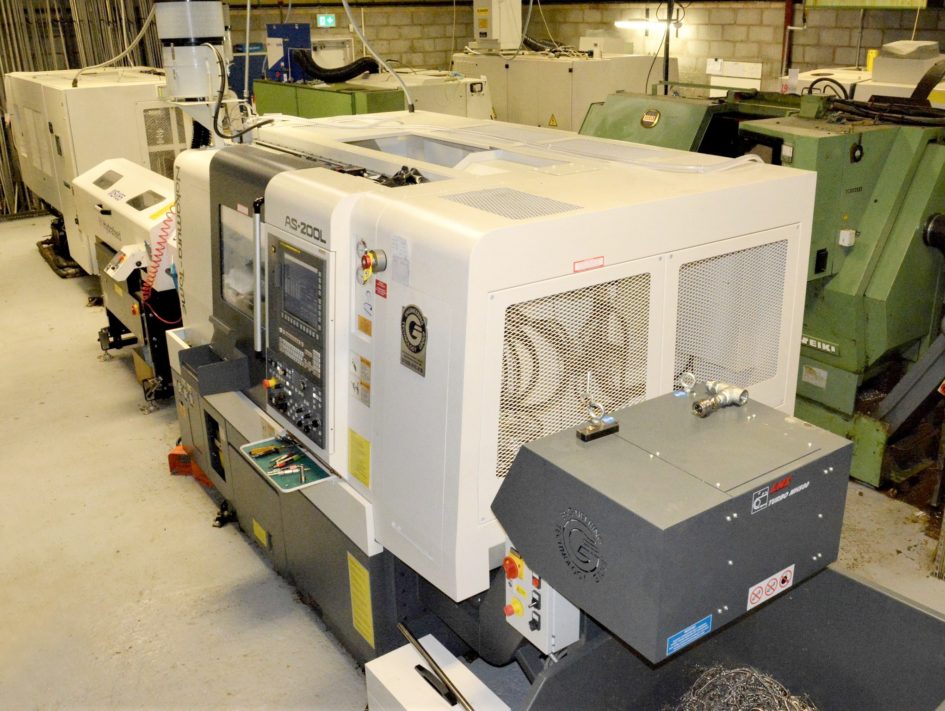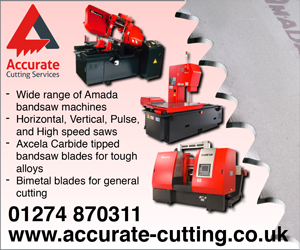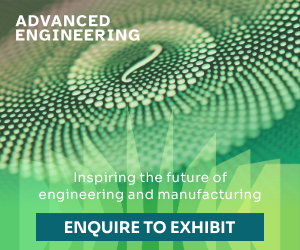Founded in 1955, Kirkham Engineering Co. Ltd has established a reputation as specialists in the production of repetition turned parts on CNC fixed head and sliding head machines. With decades of experience and a machine inventory supplied by a host of manufacturers down the generations, the latest machine to be installed was a Nakamura Tome AS-200L turning centre from the Engineering Technology Group (ETG).
The Skelmersdale manufacturer produces everything from simple to complex parts in material types from ferrous and non-ferrous metals through to exotic nickel alloys such as Duplex, Monel, Inconel, Hastelloy, Titanium, Stellite and more. Manufacturing turned parts for the oil and gas industries and petrochemical sectors, the Lancashire subcontractor is considered a specialist in the machining of exotic alloy materials. To this end, Kirkham Engineering demands that its machine tools can provide an exceptional level of flexibility and productivity whilst offering a robust build quality that provides a stable platform for machining challenging materials. This is why Kirkham has opted for the Nakamura Tome AS-200L turning centre from ETG.
Installed in October 2020, the Nakamura AS-200-LMYSF follows the previous AS-200L acquisition from ETG that arrived in 2017. The AS-200-LMYSF installed in the autumn is the result of an increasing workload at the 30-employee subcontract business. However, the AS-200-LMYSF has been bought to fill a specific role at Kirkham. As the Financial Director at Kirkham Engineering, Mr Barry Lynam says: “The AS-200-LMYSF can be set-up extremely quickly and this gives us flexibility for small batch runs of fast turnaround parts. It can respond far quicker than our more complex machines. It has a large work envelope in a small footprint and it is extremely robust which is perfect for heavy-duty cutting. We love our Nakamura machines.”
Supplied as a complete package from Wellesbourne based ETG, the AS-200-LMYSF arrived complete with tooling, a Hydrafeed MSV-65 plus a BSU bar support unit to give 1.5m barfeed and swarf conveyor, making the machine ready-to-run on the day that it arrived. The machine has a maximum turning diameter of 280mm with a maximum through-spindle bar diameter of 65mm. This enables batch and production runs of small to medium-sized parts courtesy of the Hydrafeed barfeed unit. The 8-inch chuck machine has a maximum turning length of 570mm and the 5.5/3.7kW 15-station tooling turret provides exceptional levels of torque for heavy-duty cutting and high material removal rates.
The affinity that Kirkham Engineering has with Nakamura machines dates back to 2012 when the company purchased two second-hand Nakamura WT250 twin-spindle twin-turret turning centres. “The 1999 Nakamura WT250 machines were purchased for making repetitive niche parts from 2-inch diameter billets. The components for the offshore sector were previously being completed in nine operations. The Nakamura WT250 machines brought this down to a single set-up operation that only required secondary part identity marking. The machines reduced the machining time from 30 minutes to 12 minutes – if you added the time for multiple set-ups, the savings would have been very significant. We were instantly sold on Nakamura machines.”
Since 2012, Kirkham added to its two initial WT250 turning centres with two additional WT250 machines, a second-generation WT250 II and a WT150MMY – all purchased at auction. “Nakamura machines are difficult to find at auction because nobody wants to let them go, we have been lucky down the years to get the machines we’ve had. These machines have outperformed all our other fixed head turning centres. They really are ‘a wolf in sheep’s clothing’. Whilst the twin spindle and twin turret configuration of the older machines is perfect for production runs of complex components, the new AS-200-LMYSF machines from ETG are providing benefits beyond the realms of these extremely capable machines.”
The Benefits
“When we were looking for additional turning capacity, we were always going to invest in Nakamura machines, as the performance and reliability have set these machines apart from anything else we have. The AS-200-LMYSF was a perfect fit for our business for a number of reasons,” continues Mr Lynam.
“We already have highly capable twin spindle and twin turret machines, but we wanted something that had a smaller footprint and was faster to programme and get up and running – the AS-200L fitted the bill. Unlike the larger machines, the AS-200-LMYSF is the latest generation machine with the new FANUC CNC unit and NT Machine Simulation and NT Collision Guard from Nakamura Tome. This allows us to rapidly programme and simulate our components and run the first part with confidence and speed. The culmination of having the latest generation of Nakamura software built into the FANUC CNC control means we can programme and produce parts on the AS-200-LMYSF much faster than we would on other machines. This allows us to be even more responsive to customer demands for fast-turnaround jobs, especially small batch runs,” adds Mr Lynam.
“Added to this, the kinematics of the compact AS-200-LMYSF places the tool turret closer to the workpiece to reduce non-cutting times. This shaves seconds off the cycle times when compared to our larger machines. The simultaneous machining capability of our larger twin-turret machines may yield a faster cycle time on complex parts, which is perfect for long production runs – but for smaller batches, the AS-200-LMYSF is certainly faster, more flexible and every bit as capable as the larger machines.”
“We machine a lot of parts to the NORSOK petroleum standards for the offshore industry and this sees us machining a lot of hexagonal nuts, bolts and valves from some very difficult materials. As hexagonal bar stock from stockholders is not always up to the standards we require, we buy round bar and undertake a lot of heavy-duty milling of flats on our Nakamura machines. Here, the stability and construction of the machine base combined with the heavy-duty high-powered tooling turret give us complete confidence that we can undertake high material removal rates on some very challenging materials whilst obtaining exceptional surface finishes. As a company, we are completely sold on the concept of Nakamura machines and this is borne from our long-standing experience with the Japanese brand. Additionally, the service and support from the Engineering Technology Group (ETG) is very impressive and it helps us to keep our spindles turning,” concludes Mr Lynam.





